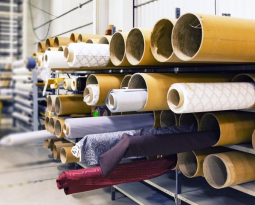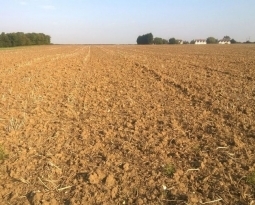Rhode Island Patent of the Month – December 2021
When constructing a house, restaurant, or commercial building, contractors usually direct the dryer exhaust duct up towards a flat roof. The end point of the duct needs to be weatherproof in order to protect the galvanised steel it is made from. It also needs to be wind protected and insect and bird proof while still maintaining maximum free air flow. While there are many existing exhaust duct termination designs, most of these are known to be difficult to install, maintain, and use in general. For instance, a roof jack design requires expensive separate roof curbs to be flashed into the roof, and then the roof jack to be flashed into these curbs. This is labor intensive and costly.
Roof Goose Vent, LLC has designed a more cost and time effective solution which still meets all required codes and regulations. The design simplifies installation by sliding snuggly over the existing duct. The galvanized duct typically extends from the roof between 18 and 42 inches. Roof Goose Vent’s duct termination consists of a sleeve, typically made of PVC to achieve a lightweight and weatherproof construction. The sleeve is slipped over and secured to the duct. A neck is attached to the sleeve, shaped with a curve that mimics the rounding of a goose’s neck. Then, a cap and damper are attached to the neck. The cap has a series of openings that allow for maximum venting while blocking pests and debris from entering. The cap can be easily twisted on or off, making it easy to clean out the vent as needed without requiring any special tools.
Roof Goose Vent uses the expertise of a high-volume multifamily HVAC subcontractor who has seen numerous vent termination designs. Each design had its own unique limitations, and so the company decided it was time for the industry to have a single solution which met and overcame every limitation.
Are you developing new technology for an existing application? Did you know your development work could be eligible for the R&D Tax Credit and you can receive up to 14% back on your expenses? Even if your development isn’t successful your work may still qualify for R&D credits (i.e. you don’t need to have a patent to qualify). To find out more, please contact a Swanson Reed R&D Specialist today or check out our free online eligibility test.
Who We Are:
Swanson Reed is one of the U.S.’ largest Specialist R&D tax advisory firms. We manage all facets of the R&D tax credit program, from claim preparation and audit compliance to claim disputes.
Swanson Reed regularly hosts free webinars and provides free IRS CE and CPE credits for CPAs. For more information please visit us at www.swansonreed.com/webinars or contact your usual Swanson Reed representative.

















